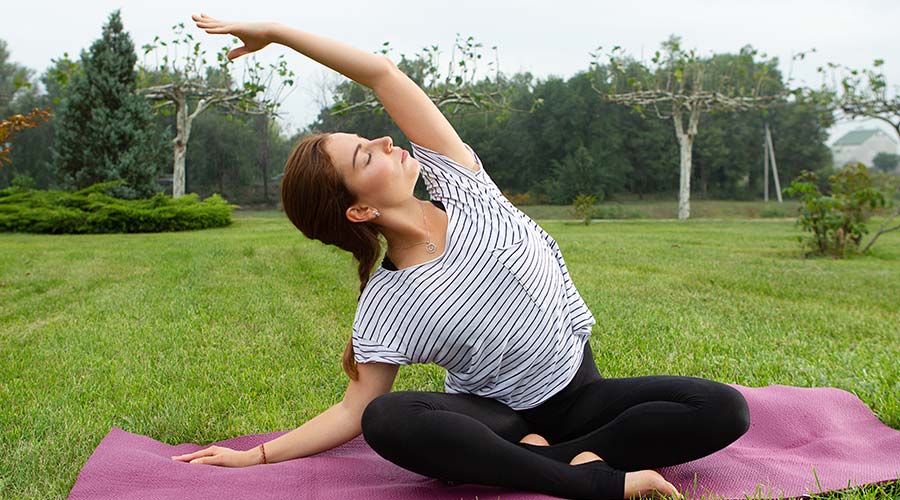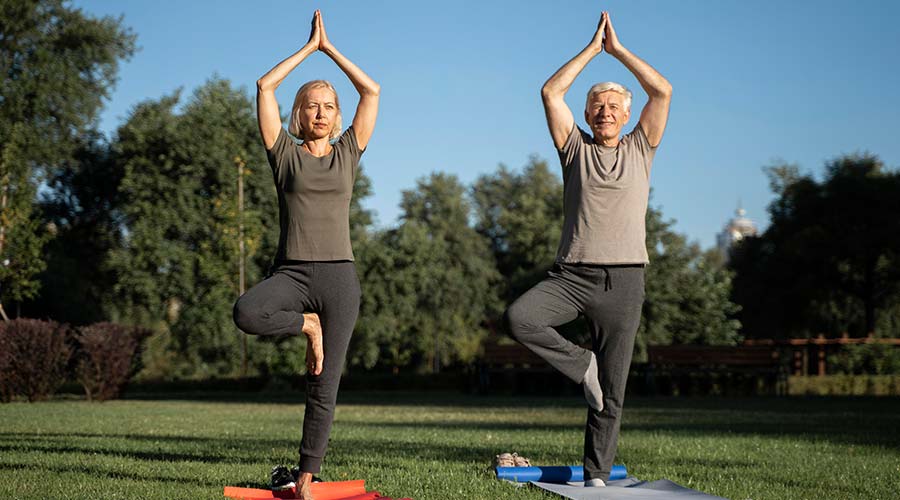Yoga is derived from sanskrit word yuj, meaning ´union´ of the individual consciousness with the universal consciousness. It is a science of right way of living working on complete aspects of the person – physical, mental, emotional, psychic and spiritual. On practical level the practice of Asana, pranayama, mudra, bandha, shatkarma and meditation leads to balancing and harmony of individual body, mind and soul.
The history of Yoga goes back to ten thousand years ago when tantric civilization existed. Lord Shiva is said to be the founder of Yoga and Shakti being his first disciple, responsible for all creation. Yoga arose at the beginning of human civilization and slowly developed by ancient sages as word of mouth only.
Ancient tantras and vedas were the first books of yoga. Sage Patanjali’s yoga sutras codified Yoga into eight fold path called as Astanga Yoga. In 6th century BC, Buddha’s brought in the ideals of Yoga like meditation, ethics and morality to the fore. Yogi Matsyendranath and his disciple, Gorakhnath wrote books on hath yoga in local dialect. Another outstanding book – Hatha Yoga Pradipika by Swami Swatmarama brings out further evolution of yoga techniques.
In todays, 21st century, Yoga has been accepted to provide wellbeing not just on individual level but a tool to combat social malaise. Yoga therapy have being more relevant today as it balances the nervous and endocrine systems which directly harmonizes other body organs. Yoga’s most important achievement is that it works on holistic principles of harmony and unification.
Four Paths of Yoga
Karma Yoga – It is yoga of action where all work is dedicated as selfless service. It leads to expansion of heart and removal of egoism.
Bhakti Yoga – Devotion and love of God in personalized form rids the emotions and egocentricity by developing humility and self-surrender.
Raja Yoga – Scientific and step-by-step approach to achieve higher state of consciousness.
Jnana Yoga – It is intellectual approach to spiritual evolution. Study of Vedanta philosophy leads to understanding of truth and dispassion (vairagya) is developed.


Yoga of today
The practice of yoga has organically evolved into different forms across the world into six basic forms.
Hatha Yoga – Physical poses (asanas), breathing exercises (pranayama) along with integration of ethics, diet, cleansing and meditation goes towards spiritual development of aspirant.
Sivananda Yoga – A type of hatha yoga which includes surya namaskar and goes through 12 asanas series.
Vinyasa Yoga – This form focuses on rapid and continuous movements flowing from one posture to the next along with synchronized breathing.
Ashtanga Yoga – Similar to Vinyasa, Ashtanga focusses on a set order of asanas steadily increasing in difficulty. Its physically taxing and significantly heats the bosy.
Kundalini Yoga – Kundalini is said to awaken the energy at the base of the spice and brings it through the seven chakras with postures, breathing, chanting mantras and meditation.
Iyengar – Established by yogi BKS Iyengar, this form pays great attention to the muscle alignment and finer details within each pose.
